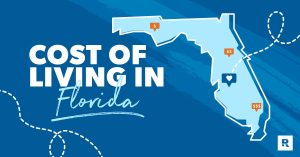Car accidents are always scary, but when the responsible party flees the scene of the accident, they can get a lot more stressful and costly. Even something as simple as scraping a bumper while parking and failing to leave a note can be considered a hit-and-run. Whether you’ve recently experienced a hit-and-run or just want to be prepared, we’ve outlined insurance options available for victims of hit-and-runs in California, along with a step-by-step guide to improve the chances of filing a hit-and-run claim successfully.
Hit-and-runs in California
An accident is considered a hit-and-run if the at-fault driver flees the scene without stopping to exchange information with the other party. In California, drivers are required by the California Traffic Code to move their vehicles out of the traffic flow, then stop, exchange information (like their name, current address and vehicle registration number) and offer “reasonable assistance” to anyone injured.
When drivers fail to meet these basic legal requirements, there are two primary consequences: for victims, getting insurance coverage for damages and injuries can become complicated; and for perpetrators, California imposes serious legal penalties, including jail time and steep fines.
Hit-and-run laws in California
The California Vehicle Code lays out definitions of and penalties for hit-and-run offenses in the state of California. The exact responsibilities of drivers vary slightly depending on the type of accident.
If the accident resulted only in property damage with no injuries, drivers must stop at the nearest location that won’t impede traffic or create a safety hazard. They must then locate and notify the owner of the damaged property, providing the name and address of both the driver and owner of the vehicle that caused the damage. If you damage property and can’t locate the owner, you must leave a note in a conspicuous place (such as the car’s windshield) giving your name, your address and a description of the circumstances that led to the damage.
If the accident involved injuries or death, you must stop at the scene of the accident. California law requires you to provide your name and current address, along with the vehicle registration number and the name and address of its owner, if you’re driving someone else’s car. You must also render reasonable assistance, which includes giving or arranging transport for any injured parties. Finally, if police were not present at the scene of a crash that involved injuries, you must make a police report as soon as possible.
In both cases, you must provide your driver’s license upon request — and although it’s not included in the text of the law, you’ll also need to exchange insurance information with other parties.
Penalties for a hit-and-run vary depending on whether the accident caused death, injuries, or property damage only:
- Property damage only: If the driver who left the scene damaged property but no one sustained injuries, they face up to six months of imprisonment in a county jail and/or a fine of up to $1,000.
- Injuries: In this case, if caught, the driver who left the scene faces up to one year in a state prison or a county jail and/or a fine of between $1,000 and $10,000.
- Deaths or serious, permanent injuries: The hit-and-run driver faces two to four years in state prison, 90 days to a year in county jail, and/ or a fine of $1,000 to $10,000. The court can reduce the minimum sentence based on circumstances including the defendant’s ability to pay a large fine.
California hit-and-run law states that this offense can be charged as a misdemeanor or felony. Generally, property damage results in a misdemeanor and fatalities almost always result in a felony charge.
How does a hit-and-run affect your insurance in California?
If you’re found guilty of a hit-and-run in California, you can expect your insurance company to raise your rates significantly upon renewal. Exact data on hit-and-run insurance rate increases is hard to come by, but we’ll use the average rate increase after an at-fault accident as a baseline.
As of October 2024, California drivers with a single at-fault accident on their record pay an average of $4,616 per year for full coverage insurance and $1,109 for state minimum coverage. For the respective coverage levels, that’s a 64 percent and 66 percent increase compared to the average cost of car insurance in California for a driver with a clean record.
But a hit-and-run is considerably more serious, as it carries criminal charges. If you’re convicted of a hit-and-run, you will likely see a rate increase above what you would pay for a standard at-fault accident. If you’re struggling to find insurance with a hit-and-run on your record, you may need to work with one of California’s high-risk auto insurance specialists.
What to do after a hit-and-run in California
If you’re hit by a driver who flees the scene in California, prioritize following correct procedures at the scene of the accident and preparing to deal with your potential insurance claim.
- Remain at the scene: Move your vehicle out of the flow of traffic and check on yourself and any passengers. If anyone requires medical assistance, call 911.
- Call and cooperate with police: Involving law enforcement at the scene of the accident raises the chances of finding the other driver and can help your insurance claim. You’ll also need to make a police report if anyone was injured in the accident.
- Gather evidence: Once you’ve ensured that everyone is safe and contacted the authorities, start taking notes — and photos — to build evidence for your hit-and-run claim with your insurance provider, as well as the police report. Take pictures of the damage and look for pieces of the other driver’s car to help identify them, but don’t move the evidence if you find it. It’s best not to touch anything and let the police collect any evidence at the scene.
- Exchange information: If any other parties are present at the scene of the accident, share your name, address, vehicle registration and insurance company information with them.
- Contact your insurance company: Promptly inform your insurer of the accident. If you have certain coverage types, such as collision insurance or medical payments, that can cover your costs in the absence of another driver, you may need to initiate a first-party claim.
Frequently asked questions
Methodology
Bankrate utilizes Quadrant Information Services to analyze October 2024 rates for all ZIP codes and carriers in all 50 states and Washington, D.C. Rates are weighted based on the population density in each geographic region. Quoted rates are based on a single, 40-year-old male and female driver with a clean driving record, good credit and the following full coverage limits:
- $100,000 bodily injury liability per person
- $300,000 bodily injury liability per accident
- $50,000 property damage liability per accident
- $100,000 uninsured motorist bodily injury per person
- $300,000 uninsured motorist bodily injury per accident
- $500 collision deductible
- $500 comprehensive deductible
To determine minimum coverage limits, Bankrate used minimum coverage that meets each state’s requirements. Our base profile drivers own a 2022 Toyota Camry, commute five days a week and drive 12,000 miles annually.
These are sample rates and should only be used for comparative purposes.
Incidents: Rates were calculated by evaluating our base profile with the following incidents applied: clean record (base) and at-fault accident.
Read the full article here










